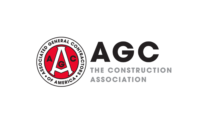Construction forecasting is a bit of a guess and mixed bag. I have read several expert reports and found some common threads in the data. There is good, average and even a bit of bad news. According to these forecast experts, 2018 could be full of surprises but all seem to forecast that the construction industry should have mostly good news for this year. Overall, construction for the United States is predicted to increase 4 to 5 percent in nominal dollars. The residential markets are forecasted to have the most growth with an increase of about 6 percent. Non-residential is predicted to grow at a modest 2 percent. Non-building construction, roads and bridges, is predicted to be at 4 percent.
Geographically, the South and West will likely be the regions of the most growth in 2018. Experts favor Texas, Nevada and New Mexico as leaders in construction growth. This is in harmony with the population forecast charts that predict Florida, Nevada, Utah, Colorado and Washington State will see significant increases in population growth. Conversely, New York, South Dakota and Nebraska will see modest declines in construction starts. The forecast for states that will lose in population are New York, Connecticut, Pennsylvania, Illinois and Vermont.
Thirty-six of the top 50 metropolitan areas of the United States will experience expansion in 2018. Topping the charts for growth is Las Vegas, Hartford, Conn., and Houston. Major metropolitan cities that will see a downturn or very slow growth are New Orleans, Los Angeles and Orlando. The three largest metropolitan markets for construction starts related to spending dollars are New York City, Dallas and Houston. Texas is expected to have moderate growth in population but lead all states with 10 percent growth in construction.
Commercial Calculations
Warehouse construction will likely increase due to e-commerce growth. The demand for regional distribution centers continue to change how we shop. Employment will grow, but more will be home-based workers and this will offset the need for new office space. Retail will grow, but with changes. Malls are out; even big box stores are suffering. There is a trend for small boutique specialty stores. The other trend is mixed-use buildings. These are living units above restaurants, retail and grocery stores.
Crises in Construction
Health care construction is predicted to remain fairly stable. Institutional work is predicted to increase slightly with bigger gains in educational facilities. Stadiums and other tax-funded projects are likely to suffer as funding sources dry up. Residential will lead the way through more single-family home starts in 2018. Developers are struggling to find land to build on. Higher lot prices will continue to put pressure on the entry-level market for housing. This is considered homes under $200,000. Factors that will still drive the residential markets upward are population growth, shift in household formations, low unemployment coupled with wage increases and low interest rates. Interest rates are climbing, but still at historically very low levels. It is predicted there will be 1.3 million residential starts for 2018 in the United States. Almost one million of those will be single-family homes.
Slackin’ in Skilled Labor
A survey of construction firms listed 70 percent felt that hourly craft workers would be the most difficult workers to find. Carpenters, electricians, brick masons and plumbers lead the way in predicted shortfalls. On the management side, the shortage of project managers and supervisors were a prime concern, followed by estimators and engineers. When asked how they planned to attract more workers or complete projects with such a labor shortage, the top answer was a raise in hourly pay. Second was offering bonuses or incentives upon completion. Increasing benefits, such as premium health care plans or pension was a close third.
It is clear that all agree the shortage of skilled labor is going to put us in a pinch and be the ugly news. All contractors should be brainstorming with upper management to find ways to attract workers to our industry. After all, even the good news of construction growth is quickly soured when you have no one to do it.




Report Abusive Comment